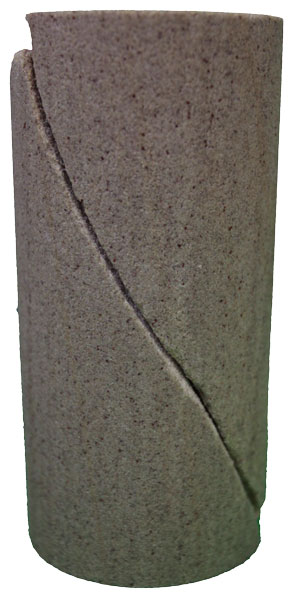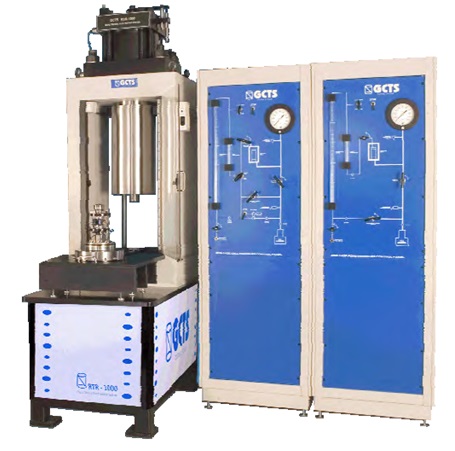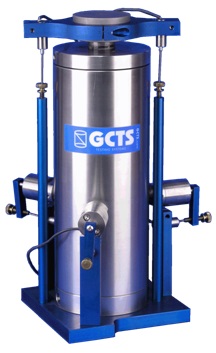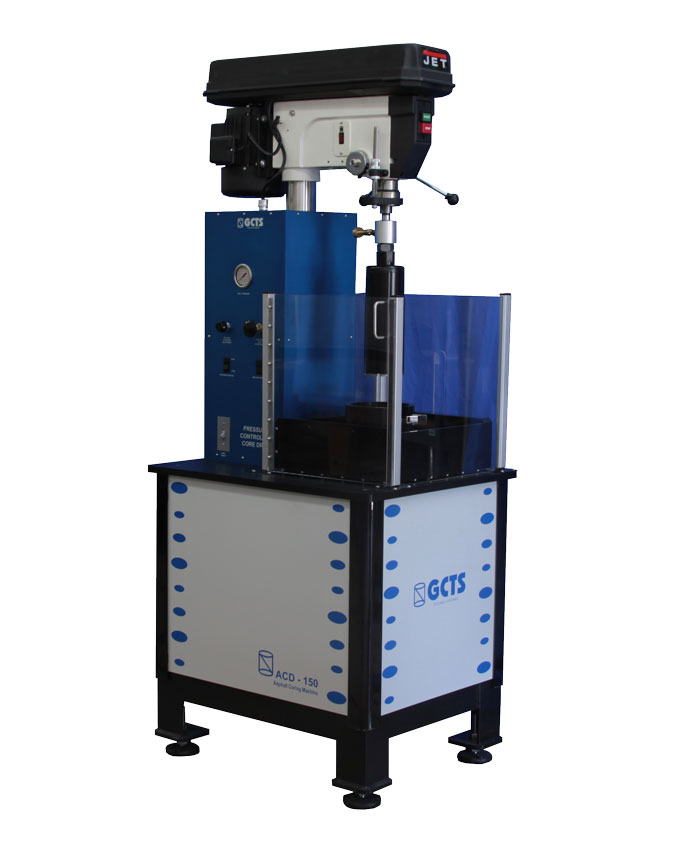Rock Triaxial Test
Overview
The rock triaxial test was designed to determine the shear strength of rock samples. Different types of rocks have largely varying shear strength values, and the shear strength of a type of rock can vary greatly depending on its confining pressure, mineral structure, the moisture in the rock, and many other factors. The triaxial test was developed to test various rock samples under many different conditions to understand how the rock will behave in the field. This test can determine how the applied stress is related to the deformation experienced by the rock sample as well as determine the angle of internal friction and cohesion of the rock sample.
Rock Triaxial Cell (Courtesy of GCTS)
How is a Triaxial Test Performed?
A normal triaxial testing system includes a device capable of applying a load to the top of the specimen, a chamber capable of applying pressure to the entirety of a specimen, and systems capable of measuring the load, pressure, and deformation of the specimen. The apparatus for a typical rock triaxial test is shown on the right. A typical specimen is placed in the compression chamber and the axial load piston is brought into contact with the top of the specimen. The compression chamber is filled with liquid, usually a non-conductive fluid such as oil, and is pressurized. The confining pressure is set to a certain value and the axial load is applied. The loading piston moves at a constant rate, changing the total height of the specimen constantly with an increasing load. The system measures the load acting on the specimen until the specimen decreases in height under a constant load. This is defined as the failure of the specimen.
What does a Rock Triaxial Specimen Look Like?

A typical rock triaxial specimen (courtesy of GCTS)
Typical specimens are cylindrical in shape and have a diameter of at least 25 mm (0.984 in) and a height around 2.0 to 2.5 times the diameter. This height allows the specimen to fail in the center of the specimen (and not through the ends) while avoiding buckling during the test. Coring machines, like the one shown below, can be used to create these cylindrical specimens from a larger sample of rock. The sample is then ground with a grinder to ensure that the faces of the rock are flat and parallel. After creating the specimen, it is wrapped in a membrane to prevent the confining liquid from entering the specimen during testing.
Rock Coring Machine (Courtesy of GCTS)
How are Rock Characteristics Determined?
Rock characteristics are determined in the same manner as soil characteristics. For an in-depth description of a Mohr’s Circle Analysis, click here. Rock triaxial tests are sometimes conducted using a multi-stage test, where a single specimen is tested under multiple confining pressures. This is done by testing a specimen until it is about to fail, then removing the axial load, increasing the confining pressure, and reapplying the axial load. This usually allows for three confining pressures to be tested on a single rock specimen. In this case, the Mohr’s Circle Analysis can be performed with a single rock specimen.
What are the Advantages of a Triaxial Test?
The advantages for a rock triaxial test are similar to the advantages of a soil triaxial test. For an in-depth description of the advantages of a triaxial test, click here.
What are the Disadvangates of a Triaxial Test?
The disadvantages for a rock triaxial test are similar to the disadvantages of a soil triaxial test. For an in-depth description of the disadvantages of the triaxial tests, click here.
Keywords: Rock Triaxial — Triaxial Test — Triaxial Testing System — Compression Test — Compressive Strength — Triaxial Testing Machine — Testing Instruments — Rock Shear Strength — Rock Strength — Shear Strength — Mohr’s Circle — Deformation — Rock Specimens
© 2016 Geotechnical Consulting and Testing Systems, LLC. All Rights Reserved.



